Table of contents
- Japan – a motorcycle manufacturing nation Bikers wonderland
- Over ten million Hondas in 2016
- State-of-the-art technology, appetizingly packaged, affordable price
- First bestselling enduro in the world
- Misery began even before the financial crisis
- MT-07, Africa Twin, Z 900
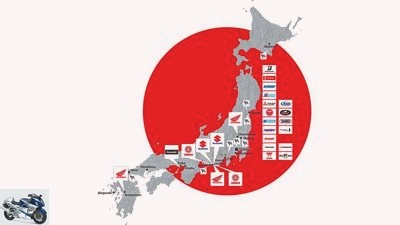
MOTORCYCLE
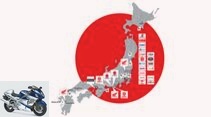
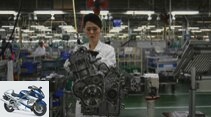

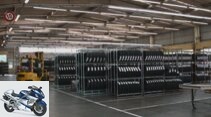
15th pictures
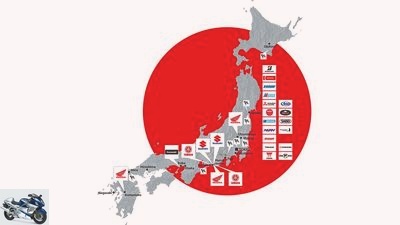
MOTORCYCLE
1/15
Japan’s motorcycle builder
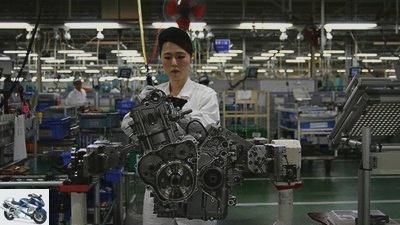
Honda
2/15
Like on the assembly line? In Japan – as here at Honda with the Africa Twin production – they still do their own thing.

Jorg Lohse
3/15
A constant for decades: Arai, the Mercedes among Japanese helmets. A lot of manual work.
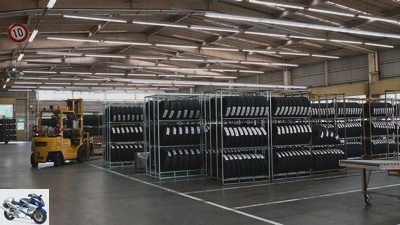
Bridgestone
4/15
The black gold: Where so many motorcycles are built as in Japan, a tire giant like Bridgestone cannot be missing.

Andrea Ruggieri
5/15
“Europe is important to the Japanese” – Andrea Ruggieri (33) is global product planner at Honda Europe in London.
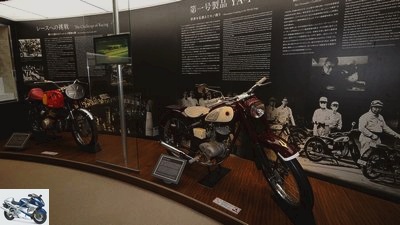
Jorg Lohse
6/15
History: in Japan also an important part of the long corporate culture. Here Yamaha’s first motorcycle YA-1.
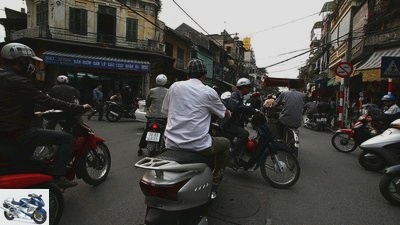
Markus Biebricher
7/15
The markets of the future? The Japanese manufacturers are active around the world, and the numbers are gigantic.
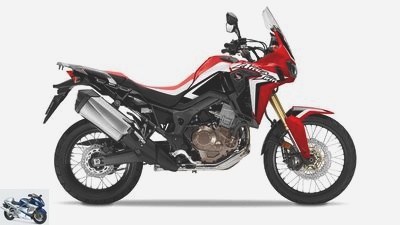
Honda
8/15
Honda Africa Twin
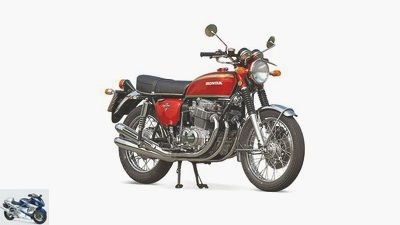
Honda
9/15
Honda CB 750 Four, 1969.
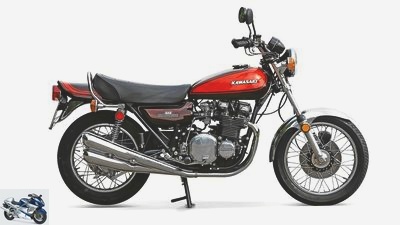
markus-jahn.com
10/15
Kawasaki Z1 900, 1973.
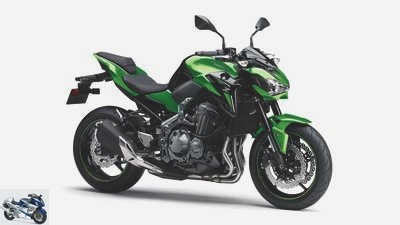
Kawasaki
11/15
Kawasaki Z 900
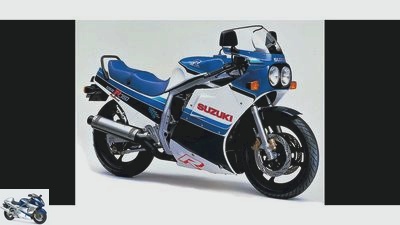
Suzuki
12/15
Suzuki GSX-R 750, 1985.

Suzuki
13/15
Suzuki GSX-R 1000.
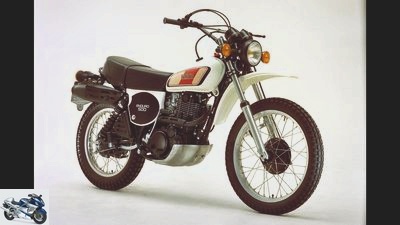
Yamaha
14/15
Yamaha XT 500, 1976.
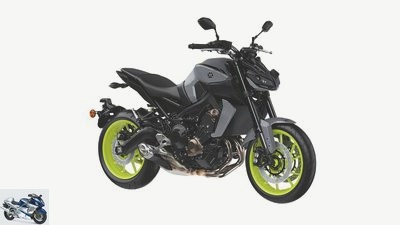
Yamaha
15/15
Yamaha MT-09.
counselor
traffic & business
Japan – a motorcycle manufacturing nation
Japan – a motorcycle manufacturing nation
Bikers wonderland
First, with the CB 750, Honda revolutionized our common image of the mass-produced motorcycle, then the Honda CBX and Kawasaki Z 1300 redefined our ideas of performance before the two-stroke rockets Yamaha RD 500 or Suzuki RG 500 served us the racetrack on our doorstep. For generations of motorcyclists, Japan has been the motorcycle wonderland. Then it got quiet.
Stefan Kaschel
07/06/2017
Let’s talk about Japan. We have to talk about Japan, we have to look back and forward. That is why we want to pay tribute to Japan’s past achievements and explore Japan’s opportunities for the future. But first we pause for a moment to consider a fundamental fact: Japan is a giant, still. And in some respects even more today than in the past, even if we in Germany and Europe sometimes have the feeling that Japan has forgotten our motorcycle needs. No, it was different. Japan has not forgotten anything, Japan had only spoiled us for decades. So much so that we took a lot for granted. But first things first, a few words about the basic dimensions.
Buy complete article

Japan – a motorcycle manufacturing nation
Bikers wonderland
6 pages) as PDF
€ 2.00
Buy now
Over ten million Hondas in 2016
An example: If we put a flag on all motorcycle production sites on the Germany map, we come up – that’s right, a single one. At least when we are talking about significant numbers. This miserable flag would then stand alone and alone in the middle of Berlin, where BMW assembles most of the current Bayern bikes. On the map of Japan below, however, there is one flag next to the other. Mind you, these are only Nippon’s inland locations. Of course, the big four in Japan have been producing around the world and around the clock, and have done so for decades. Honda built its 300,000,000 in 2014. Motorcycle. In words: 300 million! The anniversary bike was a Gold Wing. Even then, the motorcycle giant was manufacturing at 33 production sites in 22 countries.
Over ten million motorized two-wheelers left the Honda production facilities around the world in 2016 alone, around four million each year in Indonesia and India alone. For comparison: BMW and KTM, the European kings in terms of number of units, are currently matching somewhere between 150,000 and 200,000 units, Ducati and Triumph are each around 55,000. All of them together do not even come close to the number that Honda produces annually in India (although these are also other motorcycles, but more on that later). If one then considers the not inconsiderable amounts of Yamaha (Annual production around 5.1 million units), Suzuki (around one and a half million) and Kawasaki (352,000), it becomes clear: In Japan a lot revolves around the motorcycle. Still.
The supplier industry is accordingly broadly diversified, including names such as NGK, Mikuni, Denso, Keihin, Showa and Tokico. It is also prominent when we talk about accessories such as helmets and leather suits. Arai and Shoei are world-famous companies, their top image will probably be concreted for the next few decades, their names stand for high-end products and a philosophy that has also grown over decades. But be careful: Something has happened in the motorcycle wonderland since the turn of the millennium at the latest. Things are not what they used to be.
State-of-the-art technology, appetizingly packaged, affordable price
Perhaps one or the other user belongs to the generation that has flattened their noses on the shop windows of Japanese motorcycle dealers for many years, and exclusively. For which a BMW would never have been an option because it was an old man’s motorcycle. And a Moto Guzzi or a Ducati something that could be a lot of fun in the short term – when it was driving. But it clearly drove too seldom.
No, at that time anyone who had their seven senses together – and a limited budget – could only drive one Japanese woman. State-of-the-art, sometimes revolutionary technology, appetizingly packaged, at an affordable price – that was Japan. But Japan was also something else back then. Japan was a laboratory, the pure joy of experimentation, a think tank par excellence. What Nippon presented to us, starting with the magical Honda CB 750, in the 70s, 80s and also the 90s in cycles of two years, was simply breathtaking. But it was even better: never, never would we have suspected at the time that the latest Japanese achievements could immediately fly around our ears, no matter how revolutionary they were. Not even with the Honda CB 750, which actually established the fabulous fame of the brand and the entire motorcycle manufacturing nation of Japan. At that time, with 67 hp from 750 cubic centimeters, it was a well-bred super sports car for everyone. BMW, for example, was still making out with the R 75 at that time, Triumph with the Trident T 150. Kawasaki, on the other hand, presented the H1, a 500 with 60 hp.
First bestselling enduro in the world
But that was just the beginning, it got even more colorful. And technically wilder. The first production motorcycle with four-valve technology (Honda XL 250) naturally came from Japan, the first four-cylinder boxer in the Honda Gold Wing – from Japan. The legendary Kawa Z 900 with inline four-cylinder, two overhead camshafts and a fabulous 79 hp was a Japanese product through and through, as was the world’s first bestselling enduro, the XT 500. And if you didn’t reinvent a whole class of motorcycle, at least you did completely new engine configurations. 1978, for example, was the year of the Honda CBX with its six-cylinder with four-valve technology and 105 hp, which was soon to result in the 100 hp limit.
1978 was also the year of the Honda CX 500 with a longitudinally installed, water-cooled V2. And 1978 was the year of the Honda CB 900 F with the addition of Bol d’Or, the premiere of a new four-cylinder generation. Do you notice what? At that time, the pool of capable and courageous engineers seemed almost as inexhaustible as the willingness to use these capacities. And that didn’t just apply to world market leader Honda.
Misery began even before the financial crisis
Two more examples that demonstrate the fighting spirit and innovative strength of Japan in these wild years and culminated in the incomparable duels of that time. When Yamaha brought the GP spirit one to one onto the road with the RD 500 (88 hp), Suzuki immediately followed suit with the RG 500 and went one step further with 95 hp. Even before that, when Honda conjured up a completely new technology with the CX 500 Turbo, Yamaha (XJ 650 Turbo), Kawasaki (GPZ 750 Turbo) and Suzuki XN 85 Turbo were spoiled for choice, regardless of all market and technical opportunities Necessities. What mattered was the image.
Which brings us back to the here and now. And what has changed for Japanese motorcycle construction and its relationship to the developed European and North American markets since the turn of the millennium. Because even if the global financial crisis that began in 2007 is generally held responsible for the declining commitment of Japanese manufacturers in these markets, the misery began earlier and was also due to the years of unfavorable yen exchange rate. But there were two more points. The first and undoubtedly most important is one that is only marginally perceived from a European point of view, namely the rapid development of the so-called emerging markets in Asia and South America, the developing markets and their brilliant sales opportunities due to the millions of sales of easy to plan and cheap small motorcycles to be produced. They are built locally in huge factories at low wage costs and, unlike in the saturated markets of the industrialized nations, find great sales there.
MT-07, Africa Twin, Z 900
In Europe, on the other hand, technological resistance was forming at the same time. Ducati, until then only committed to the sports segment, recognized the signs of the times and expanded its range of models to include technologically sophisticated naked bikes and all-rounders. And BMW? Until then, mainly represented in the market by the Boxer series and the draft horse GS, it was virtually reinvented. At a tremendous pace of development, completely new single-cylinder, two-cylinder and four-cylinder models were launched and the sports motorcycle market was discovered with the HP2 and finally with the S 1000 RR. In addition, with KTM, a completely new and equally lively competitor was added, who served the market at a similar and sometimes even faster pace with what it demanded, namely brand-typical independence and technical innovation.
And Japan? For a long time it seemed as if one were only watching from distant Asia, lengthening the model cycles into eternity and indulging in ever similar variations on the same theme to the point of arbitrariness. But then Yamaha came along and demonstrated with a completely newly developed engine generation, the MT-07-Twin and the MT-09-Triple, that cleverly made engines that can be produced inexpensively open up completely new options in the developed markets. Both models and the variants derived from them became big sellers and leave numerous possibilities open for the future as well. And success in Europe is good for your image. Also in the Asian and South American markets, where together with the heroes of MotoGP they ensure better sales. Honda noticed that too. At the latest by the success of the new Africa Twin, which one was probably the most surprised. So much so that you can’t produce as many as you could sell. Kawasaki is doing the same with the new Z 900.
Related articles
-
Report: Riding a motorcycle in Japan
Suzuki to travel Report: Riding a motorcycle in Japan Report: Riding a motorcycle in Japan The cradle of the modern motorcycle: Through Japan by…
-
Dentges 40 pictures Dentges 1/40 Failing on an 8000 is no shame. But not to pack Mount Fuji, which is barely half as high in Japan? That is weak. Dentges…
-
High-tech motorcycle helmet from Japan – Borderless Crosshelmet
Photo: Borderless 6th pictures Borderless 1/6 Borderless cross helmet. Borderless 2/6 Borderless cross helmet. Borderless 3/6 Borderless cross helmet….
-
archive motorcycles Motorcycle review in decades Motorcycle review in decades Motorcycles that shaped epochs New year, time to look back. But not…
-
Legendary riders from motorcycle racing
ADAC 14th pictures archive 1/14 Start of the German Grand Prix in Hockenheim 1985 in front of full ranks. archive 2/14 The most famous black line in the…
-
The best motorcycle racers of all time
Cathcart Sports & scene Motorsport The best motorcycle racers of all time The best racing drivers of all time The heroes of the MOTORRAD editors Of…
-
Spanish motorcycle market is shrinking
Yamaha 30th pictures Kymco 1/30 1st place: Kymco Agility City 125 with 5,704 registrations. Honda. 2/30 2nd place: Honda PCX 125 with 5,301…
-
Top 20 new motorcycle registrations women 1st half of 2018
manufacturer 20th pictures manufacturer 1/20 20th place among new motorcycle registrations for women in the first half of 2018: Honda CBR 500 R with 69…
-
Edge motorcycles Motorcycle market in china Motorcycle market in china Mass mobilization The Chinese motorcycle market seems inexhaustible, but only for…
-
Motorcycle production country Thailand: Ducatis now also from Thailand?
Ducati counselor traffic & business Motorcycle production country Thailand: Ducatis now also from Thailand? Thailand is the number 5 motorcycle…